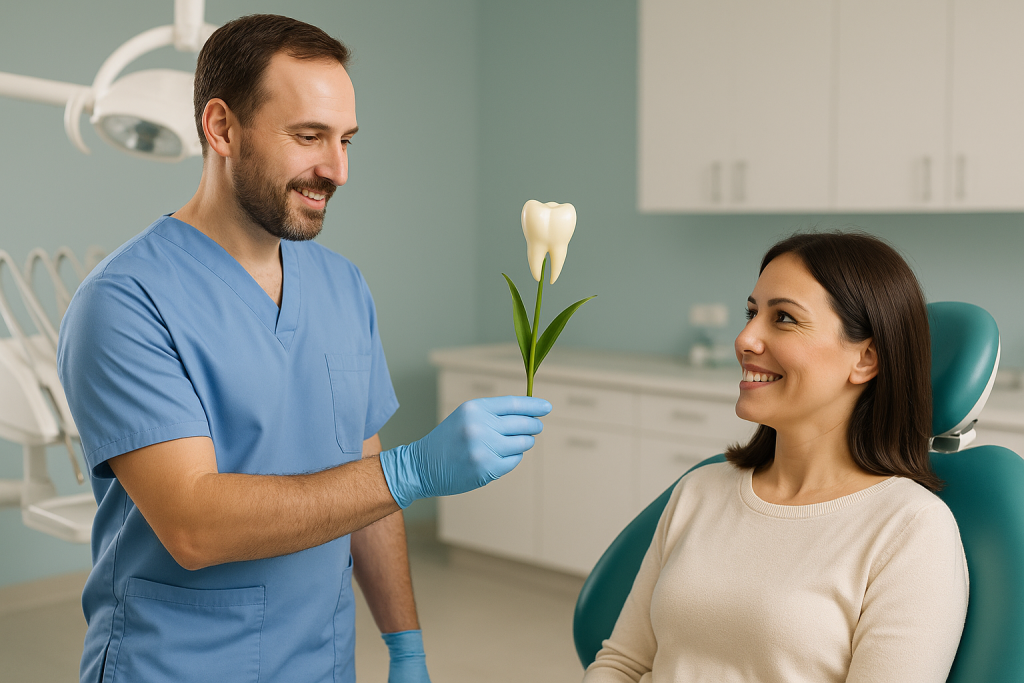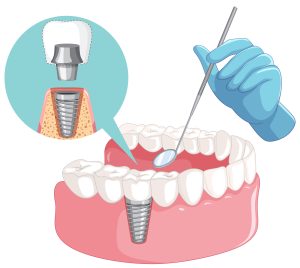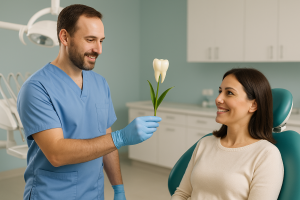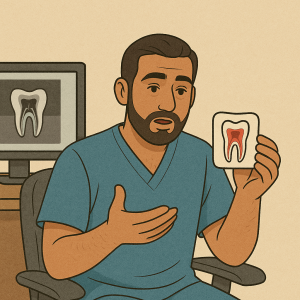Human teeth change only once in a lifetime: baby teeth are replaced by permanent teeth. After that, there is no natural renewal. Trauma, cavities, gum disease, congenital anodontia, and aging—all can lead to tooth loss. For decades, science has dreamed of a way to help people grow a new natural tooth.
In 2025, this dream moved closer to reality—from two different directions of research.
Japan: Switching Nature Back On
What seemed like science fiction a decade ago is now being tested on people.
A team led by Dr. Katsu Takahashi from the Medical Research Institute at Kitano Hospital (Osaka) and Kyoto University is working with the protein USAG-1 (SOSTDC1). This protein acts like a brake, blocking two major signaling pathways—BMP (bone morphogenetic proteins) and Wnt—which control tooth bud formation during embryonic development.
The researchers created a monoclonal antibody that “switches off” USAG-1.
The results were remarkable. In 2021 experiments on mice and ferrets, animals grew new, fully functional teeth without side effects or damage to other organs (Murashima-Suginami et al., Science Advances, 2021).
“Humans have rudimentary buds for a so-called third set of teeth. Normally they don’t develop, but if USAG-1 is blocked, nature activates their growth,” explains Takahashi.
In September 2024, the Japanese team launched the first clinical trials in humans. Thirty men aged 30–64, each missing at least one tooth, are receiving intravenous injections of the antibody. The aim: to evaluate safety, dosage, and early signs of tooth regeneration.
If the drug proves effective and safe, the next phase will focus on children aged 2–7 with congenital anodontia—a rare condition where teeth never develop.
Outlook: By 2030, dentistry could see the world’s first medicine that enables humans to grow a new tooth naturally.
United Kingdom: The Lab-Grown Tooth Concept
Researchers at King’s College London and Imperial College London took a different path. Instead of reactivating nature, they are recreating it in the laboratory.
They developed a hydrogel that mimics the embryonic environment. Within this matrix, cells begin exchanging signals and triggering the development of tooth tissue.
In April 2025, the team reported a milestone: they had grown a human tooth bud in the lab, with early signs of enamel and dentin formation.
What’s next? Two applications are under consideration:
- Transplanting these cell-based tooth buds into the jaw, where they could grow into a natural tooth.
- Growing a complete tooth in the lab and later implanting it in the patient.
While We Wait for Science Fiction to Become Reality
Whether it is a pill that regrows teeth or a tooth grown in a Petri dish, these breakthroughs are still in development. But in modern dentistry today, we already have powerful solutions to restore smiles:
- Dental implants that function like natural roots.
- Ceramic dental crowns that are indistinguishable from real teeth.
- Precise root canal treatments that save teeth once thought beyond repair.
For patients seeking world-class restorative dentistry—from implant dentistry in Abu Dhabi to advanced crown and root canal treatments—the future of dental care is not just coming. It is already here.
References
- Murashima-Suginami A. et al., Science Advances (2021) — DOI: 10.1126/sciadv.abf1798
- Ravi V. et al., Regenerative Therapy (2023) — DOI: 10.1016/j.reth.2023.01.004
- Murashima-Suginami A. et al., Journal of Oral Biosciences (2024) — DOI: 10.1016/j.job.2024.09.004
- MedPath Clinical Trials Database (2024)
- Dentistry.co.uk (2025)
- EurekAlert (2025)
- LiveScience (2025)




